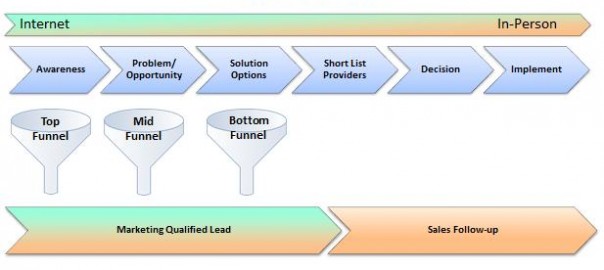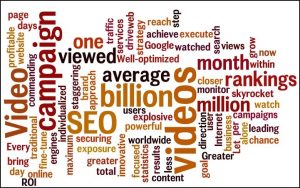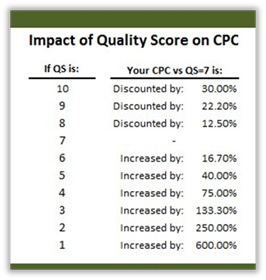
Technology isn’t the answer, it’s just an amazing enabler.
The driving force behind companies adopting sales and marketing automation software is to accelerate revenue and improve ROI (return on investment). Unfortunately, the results have been mixed.
- The ROI from Marketing Automation (MAP) software seems to be great from a Marketing perspective, but not compelling from a company perspective. Studies suggest that only 21% of Marketing-generated leads eventually become revenue and the remaining 79% end up becoming dead ends. The problem is that Sales doesn’t know which lead might turn into revenue this fiscal year without working on all of the leads. The lost opportunity cost of the sales force chasing poor leads drags down company ROI.
- Sales Force Automation (SFA) software is supposed to enable sales performance, but Sales Representatives only use a small fraction of its capabilities. Studies suggest that only 37% of a sales representative’s time is actually available for selling and that only 50% of the Sales reps make quota. The extra time it takes Sales reps to enter data and manage their activities doesn’t seem to be substantially improving company revenue growth.
- Both Marketing Automation and Sales Force Automation rely on a common Customer Relationship Management (CRM) database to feed their campaigns and reports, yet over 25% of that data is typically inaccurate or unreliable. Why? The Sales reps did not bother to enter accurate data because it didn’t help them directly make quota, so garbage in becomes garbage out, driving reports that do not provide the insights that help the C-suite manage sales performance and forecast accuracy.
Imagine the impact if the company’s Marketing function was able to generate 40%+ of the forecasted Sales pipeline, or the Sales function was able to consistently achieve quota while decreasing cost per sale, or both functions were able to celebrate their collaboration that drove double digit revenue growth for their company.
Imagine the impact to a technology vendor’s fortunes, and to the careers of everyone in the MarTech and SalesTech arena, if the customer’s revenues, ROI and productivity skyrocketed as a direct result of automation software.
This gap between expectations and outcomes represents a serious business challenge for both B2B customers and B2B Technology vendors.
The Elephant in the Room
The Buyer has changed. They are self-educating online and completing up to 70% of their purchasing journey without speaking to the Sales department. It has fundamentally changed how we should market and sell to our customers.

The buyer has changed by self-educating online, so the vendors have responded with Marketing Automation and myriad other technologies for tracking and engaging the buyer as they visit the company website, as they engage on multiple social media platforms, as they engage with various digital ads, and as they use their smartphone to access information.
However, if the buyer has changed their purchasing process, why are we trying to align a lead that comes out of our outdated Marketing Process with a lead that is acceptable for our outdated Sales Process? If the buyer looks at 2 blog posts or downloads one research study, is it really a lead? Maybe it should be 1 blog post and a case study? Not sure how lead alignment better aligns us with the buyer.
The Failure Of Automating Outdated Marketing Processes
Several years ago the primary source of Marketing-generated leads was industry trade shows. In return for a prospect’s business card, the prospect could win a nice prize or receive a free tee shirt. Hundreds of leads would be delivered to the hungry sales force, even though a lot of these leads had no interest in the company’s product (well, the prospect’s children were interested in the free tee shirt, size extra small). It was the best we could do in Marketing at the time.
Fast forward to today where Marketing is engaging potential buyers online, wherever and whenever they can, offering them access to amazing content in return for some contact information. Even if no one knows who they are, or even know if they actually read our amazing content, they immediately become one of the thousands of leads destined for the sales force, thanks to marketing automation. Just because someone downloads one piece of Marketing’s BOFU (Bottom of Funnel) content doesn’t mean they are a useful lead for Sales. We can do better.

The vendors are scrambling to bridge the gap with lead scoring technologies.
- Lead scoring tries to prioritize leads according to buyer activity: website visits, clicks, download-form completions, etc.
- Predictive lead scoring, in somewhat simple terms, tries to match the digital fingerprint of a website visitor to the digital fingerprint of the company’s existing customers.
- These are great technologies that can improve upon a successful lead generation business strategy. However, technology cannot fix a broken business strategy.
Vendors like InfusionSoft and Hubspot offer the option of one system for both sales and marketing users to potentially collaborate in improving customer experience and delivering increased outcomes. I personally endorse this direction for Small and Medium Business to get their sales and marketing folks on the same system, if not always on the same page. For larger businesses, vendors like Marketo will probably continue to move towards tighter integration between the customer’s existing SFA/CRM and their Marketing Automation platform.
Marketing departments have a lot to gain or lose in resolving this. They have spent millions on technology and need to demonstrate a meaningful payback to the C-suite.
However, Marketing Automation vendors also have a lot to gain or lose. If Marketing-generated leads don’t translate into substantially increased sales, the vendors product will ultimately be blamed. The customer is always right and vendors always seem to get the short stick when expectations exceed outcomes.
The Failure Of Automating Outdated Sales Processes
Several years ago the primary source of industry and product information for a buyer was the local sales representative. In fact, if the buyer didn’t call them personally, they sent an RFI (Request for Information) or RFP (Request for Proposal) looking for information. The sales process was always in-person.
Today, even if a Sales rep is able to cold call into a potential opportunity early in the purchasing process, a lot of the buyer’s education will still continue online and not be dependent on the Sales rep.

Sales is struggling to adjust and achieve their quotas by increasing their focus on new logo business prospecting, adding Social selling techniques, and deploying increased telesales/inside sales/sales development resources. Justifying the added Sales resources or training expense isn’t going to be well received by the C-suite, who thought that CRM/SFA technology was the key to increased sales performance, not more headcount. We can do better.
Technology vendors are trying to fill the gap with updated CRM/SFA implementations that have more features and increased capabilities. Unfortunately, most of them come with more complexity for the sales rep. In contrast, solutions are emerging for small and medium businesses (SMB) that focus more on the user experience.
- Hubspot’s integrated revenue system (sales and marketing automation with CRM) includes Sidekick sales automation software, with the future potential of offering more capabilities that both sales and marketing users can leverage.
- Pipeline Manager sales automation software greatly enhances, rather than replaces, the customer’s existing Salesforce CRM system. Its software is designed to empower the sales rep to be more productive and effective, plus, empower the sales manager to quickly and easily update the sales process to reflect prevailing field best practices.
- This is the right direction for Small and Medium Business to get their sales force more productive, provide better feedback to Marketing, and do so at minimum expense with amazing ROI.
The Solution For Unfulfilled Promises And Unrealistic Expectations
Whether the C-suite only heard what they wanted to hear from the technology vendors, or whether the technology vendors only told them what the C-suite wanted to hear, is no longer relevant.
How we got here is no longer important. Vendor reputations, CMO reputations and IT reputations are on the line. Finger pointing is not the outcome anyone wants.
The Sales VP and Marketing VP need to find a way to collaborate, get on the same page and align themselves to the new buyer reality. To jumpstart productive collaboration efforts between the two functions consider bringing in an experienced technology-savvy Marketing and Sales consultant.

Marketing Automation, Sales Force Automation, and CRM vendors also need to step up and become a long term valued partner, not just another product vendor. As part of the technology implementation planning, they need to help the customer get on the right track of aligning business process to the buyer.
We can, and we should, help our customers understand that they will get decent ROI if they simply automate existing processes, but they could get an amazing ROI if they automate the right processes. Even smaller technology vendors should seriously consider bringing in an experienced technology-savvy Marketing and Sales consultant during the implementation planning phase to help kick start the customer’s business process collaboration.
Auto-magical black boxes work best enabling an effective cross-functional revenue strategy that is aligned with the buyer journey.
It’s time for amazing automation technology to enable amazing business outcomes!!!
How will you close the gap? Please keep the discussion going by commenting and sharing this post with your colleagues.
(354)
Report Post






